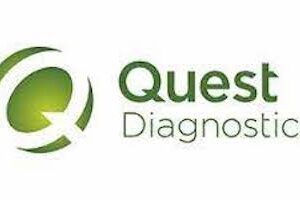Description
* Labcorp , Laboratory Corporation of America, any associated logos, and all associated Labcorp registered or unregistered trademarks are the property of Laboratory Corporation of America.
|
Test |
Screening |
Confirm |
Result |
Units |
Lab |
| Amphetamines |
1000 |
500 |
ng/mL |
Negative |
|
| Barbiturates |
200 |
200 |
ng/mL |
Negative |
|
| Benzodiazepines |
300 |
300 |
ng/mL |
Negative |
|
| Cocaine |
300 |
150 |
ng/mL |
Negative |
|
| Ethanol |
20 |
20 |
mg/dL |
Negative |
|
| Marijuana Metab. |
50 |
15 |
ng/mL |
Negative |
|
| Methadone |
300 |
300 |
ng/mL |
Negative |
|
| Methaqualone |
300 |
300 |
ng/mL |
Negative |
|
| Opiates |
300 |
200 |
ng/mL |
Negative |
|
| Oxycodone |
300 |
150 |
ng/mL |
Negative |
|
| PCP |
25 |
10 |
ng/mL |
Negative |
|
| Propoxyphene |
300 |
300 |
ng/mL |
Negative |
| Creatinine |
| pH |
LabCorp offers an 11-panel drug and alcohol panel, which is a comprehensive testing panel designed to detect the presence of various drugs and alcohol in a person’s system. The specific substances included in the panel may vary based on the testing requirements or the organization requesting the test.
The composition of the 11-panel drug and alcohol panel is as follows:
- Amphetamines (including methamphetamine)
- Barbiturates
- Benzodiazepines
- Cocaine
- Marijuana (THC)
- Methadone
- Methaqualone
- Opiates (such as codeine, morphine, and heroin)
- Oxycodone
- Phencyclidine (PCP)
- Propoxyphene
- Alcohol (ethyl alcohol/ethanol)
This comprehensive panel allows for the detection of a wide range of substances, including both illicit drugs and commonly abused prescription medications. By including alcohol testing, it provides a holistic assessment of substance use.
A comprehensive drug test panel, which typically includes a wide range of substances, offers several advantages over narrower testing panels. Here are some of the advantages of a comprehensive drug test panel:
- Detects a broad range of substances: A comprehensive drug test panel screens for a wide variety of drugs, including illicit substances and commonly abused prescription medications. This allows for a more thorough assessment of substance use and provides a comprehensive overview of an individual’s drug history.
- Covers diverse drug classes: A comprehensive panel typically includes drugs from various classes, such as opioids, amphetamines, cannabinoids, benzodiazepines, barbiturates, and more. This ensures a comprehensive evaluation of different drug categories, providing a more comprehensive picture of an individual’s substance use patterns.
- Identifies emerging drug trends: By including a broader range of substances, a comprehensive drug test panel helps in identifying emerging drug trends and new substances of abuse. This is particularly important for staying up to date with evolving drug landscapes and responding effectively to emerging public health concerns.
- Provides more accurate results: With a comprehensive panel, there is a reduced risk of false negatives or false positives for specific substances. By including a broader spectrum of drugs, the likelihood of detecting any drug use is increased, leading to more accurate results.
- Addresses polydrug use: Polydrug use, the concurrent use of multiple substances, is common among substance users. A comprehensive drug test panel enables the detection of multiple drugs, which is crucial for identifying polydrug use patterns and assessing the potential risks and interactions associated with multiple substances.
- Supports medical and treatment decisions: A comprehensive drug test panel provides valuable information for medical professionals and treatment providers. It assists in diagnosing substance use disorders, developing appropriate treatment plans, monitoring progress, and making informed decisions regarding medication management.
It’s important to note that the selection of a drug test panel should be based on specific testing needs, regulatory requirements, and the context in which the testing is being conducted. The advantages of a comprehensive panel should be balanced with considerations such as cost, testing timeframes, and the specific objectives of the testing program.





Reviews
There are no reviews yet.